The shapes of fashion are ever-shifting. There were the waist-whittling corsets of yore, which defined — and redefined — women’s beauty standards for centuries. Then came the androgynous drop-waists of the Roaring Twenties, the mini dresses of the 60s’ sexual revolution and the breezy silhouettes of the hippie movement. Throughout the ages, our clothes have shrunk, expanded, flared, narrowed and billowed to coincide with social movements, to facilitate new ways of living, to reflect values and attitudes. The clothes have shaped us, quite literally. But more interestingly, we have, and continue to, shaped our clothes in a way that reflects us and the world we live in.
It follows, then, that the silhouette of a garment always tells a story. Some cases are more obvious than others: Rei Kawakubo’s infamous “lumps and bumps” collection in all its grotesque, anti-fashion glory. Sometimes — in the case of Rei — the garment comes in the metaphorical shape of a question mark. Sometimes it speaks to social progress. Sometimes it’s a means of turning the inside, outward — literally. A new generation of designers are doing all of the above and more. At the nexus of fashion and art, designers Marco Ribeiro, Sun Woo Chang, Chet Lo and Terrence Zhou are creating garments with extreme silhouettes — some pushing the bounds of wearability — to communicate their vision of the world around them.
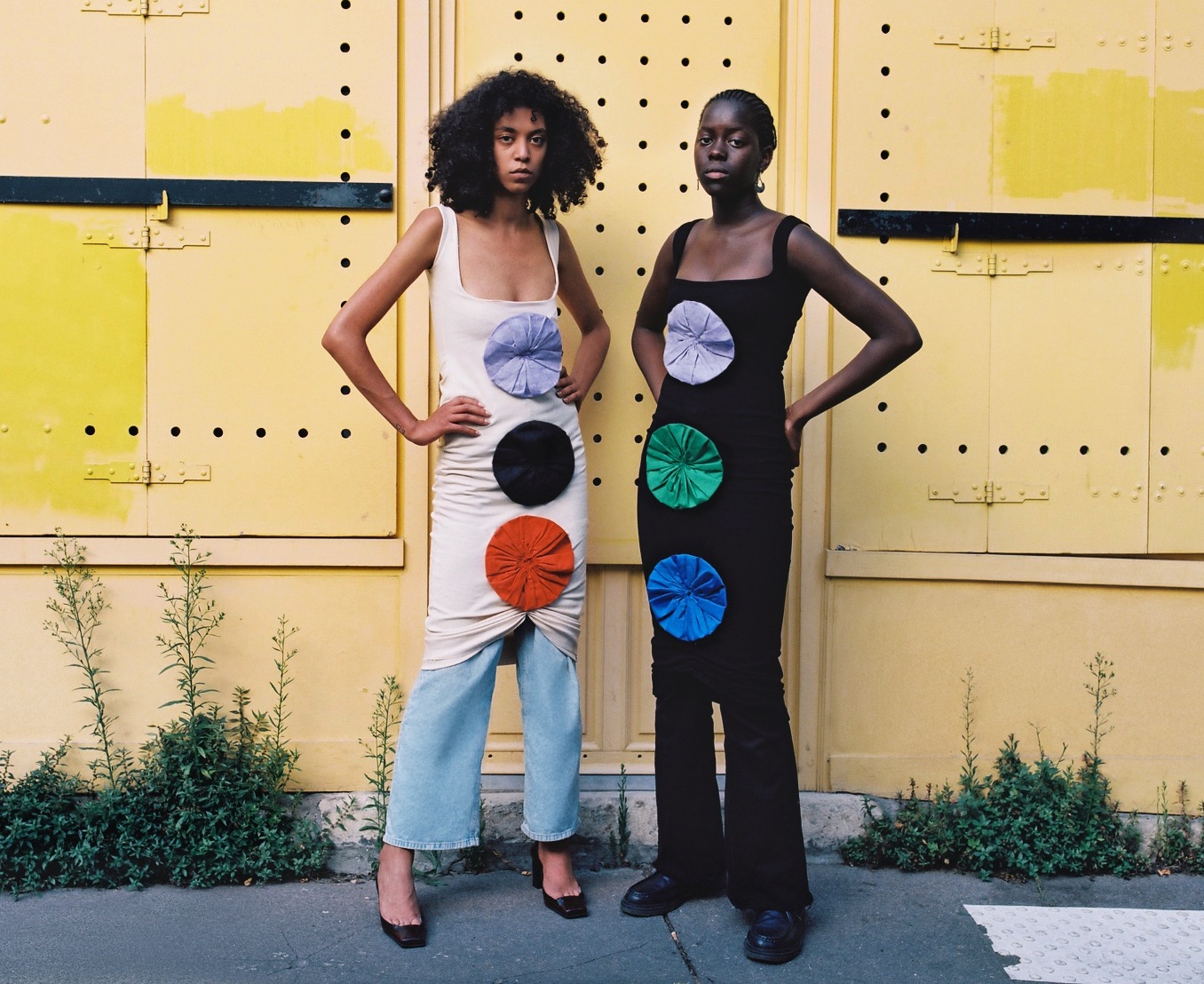

MARCO
Brazilian-born, Paris-based designer Marco Ribeiro’s playful circular garments are both a “tool of joy, unity and positivity” and “a form of protest”.
How did you start designing clothing?
Growing up in Brazil, my parents had a small atelier supplying local stores. I found it very inspiring watching them create something from nothing and I knew I wanted to be creative from a young age. I just didn’t really know how. I moved to Argentina and studied two years of fashion design in Buenos Aires, but I didn’t finish the course. I wanted to be more spontaneous. I always have had the desire to express myself and explore my own path. It wasn’t until I arrived in Paris that this project really began to become a reality. When I launched MARCO, it was actually a very organic process and it continues to be. It’s all very instinctive.
What’s the concept behind your circle pieces?
My work’s based on the exploration of shapes. I feel they’re the building blocks of everything: the human body, architecture, fashion, etc. Visually, I’ve always been drawn to the circle. For me, it’s a symbol of union, a message of equality. Without an obvious start or end, the circle makes you stop and think about the present moment. In our modern world, that pause, I feel, brings added enjoyment to life.
The oversized graphic silhouettes of the big circle looks are deliberately dramatic and a bit absurd. I want to be playful, colourful and present a new, positive point of view. I want my clothes to disrupt the environment around them, exposing the constructs and limitations we lie within. It’s a bit serious and a bit playful at the same time, using my creations as a tool of joy, unity and positivity. The world is serious, so I want to dare people to be freer. In this way, the circles are a form of protest.
How does the human body inform your work?
How the body informs my work is actually a bit of a contradiction. On one hand, I am dehumanising the body by seeing it as a collection of shapes. On the other hand, I want to free the body and make us more human.
How does wearability factor into your design process?
I am super inspired by [Brazilian artist] Hélio Oiticica: in particular, his performance The Parangolés; “Objects only come truly alive through the movements of the people who wear them”. So, wearability is integral to my work, but not in such a conventional way. I understand that you won’t be going to the shop wearing one of my circle looks. But I hope that people see them and see the fun and joy in them and want to wear them as an experience. Of course, fashion is a business, so I am exploring ways to translate my work into more conventional wearability. But at the moment, the point is that they aren’t something conventional.
Could your pieces exist as autonomous works, without being related to the body?
Absolutely. I have seen some of my work as wearable sculptures since the beginning. Being a designer is like being an architect or sculptor, but instead of concrete, clay or stone, our materials are fabric and the human body. We have to develop a design that is functional for the human being, something to wrap the body. But at the same time, I wanted my clothes to be seen as works of art. So that tension of whether some of my pieces are clothes or sculptures is something I like to play with.
I think the big circles have one life on a body and another on their own. In both situations they interrupt the environment around them and make you stop and look at it in a new way. I love seeing all the circles hanging up in my studio for example. It makes my space feel like a gallery. I have this romantic idea that you might hang one of my circles on your wall and then grab it on the way out and wear it to an event or party or something. When I’m designing that’s who I see, a person who isn’t afraid to abandon convention and push boundaries, who’s comfortable in themselves and willing to have fun. Whether they wear my clothes or display them as art is up to them.
You can purchase MARCO’s garments through personal order, by emailing sales@marcoofficiel.com.
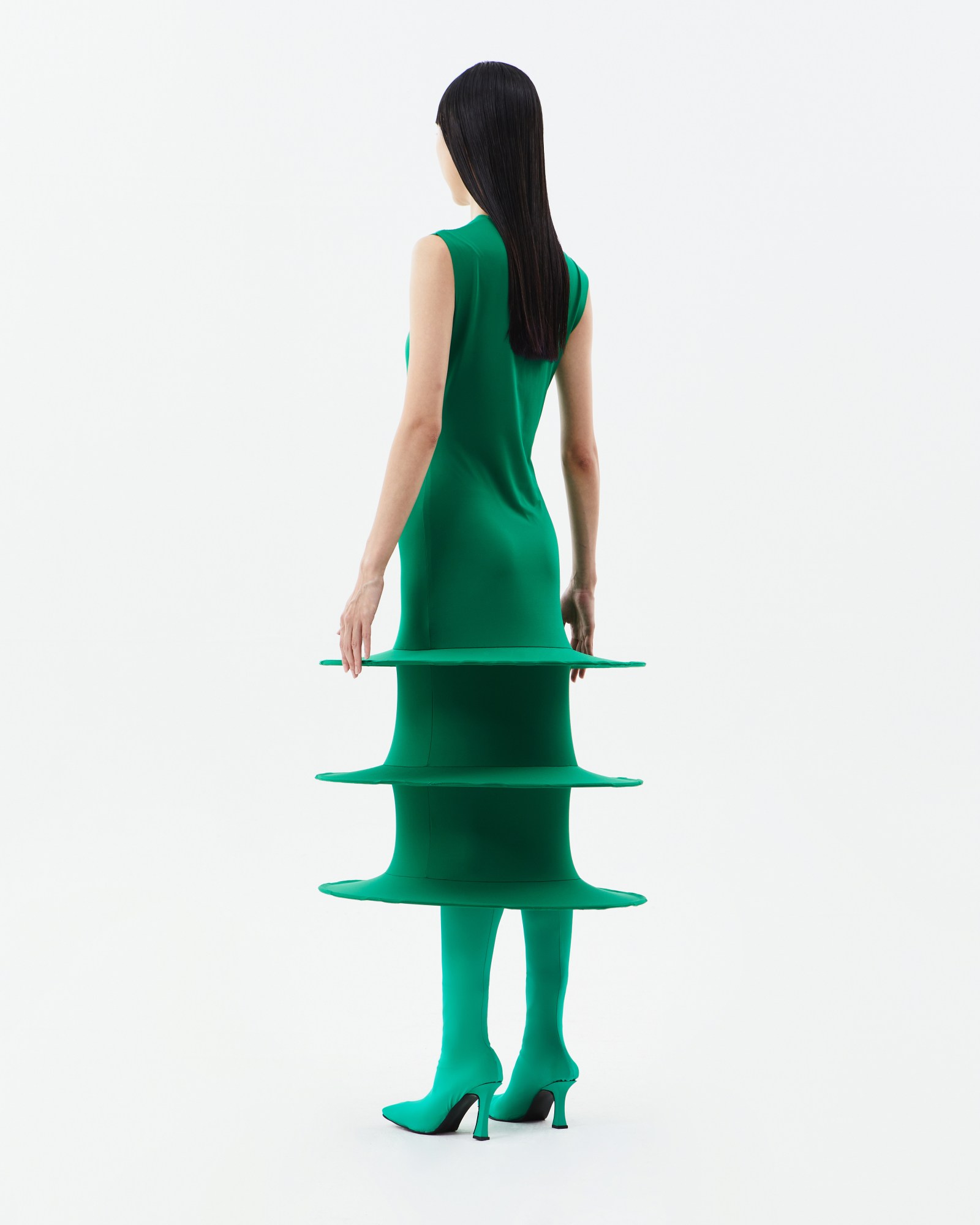
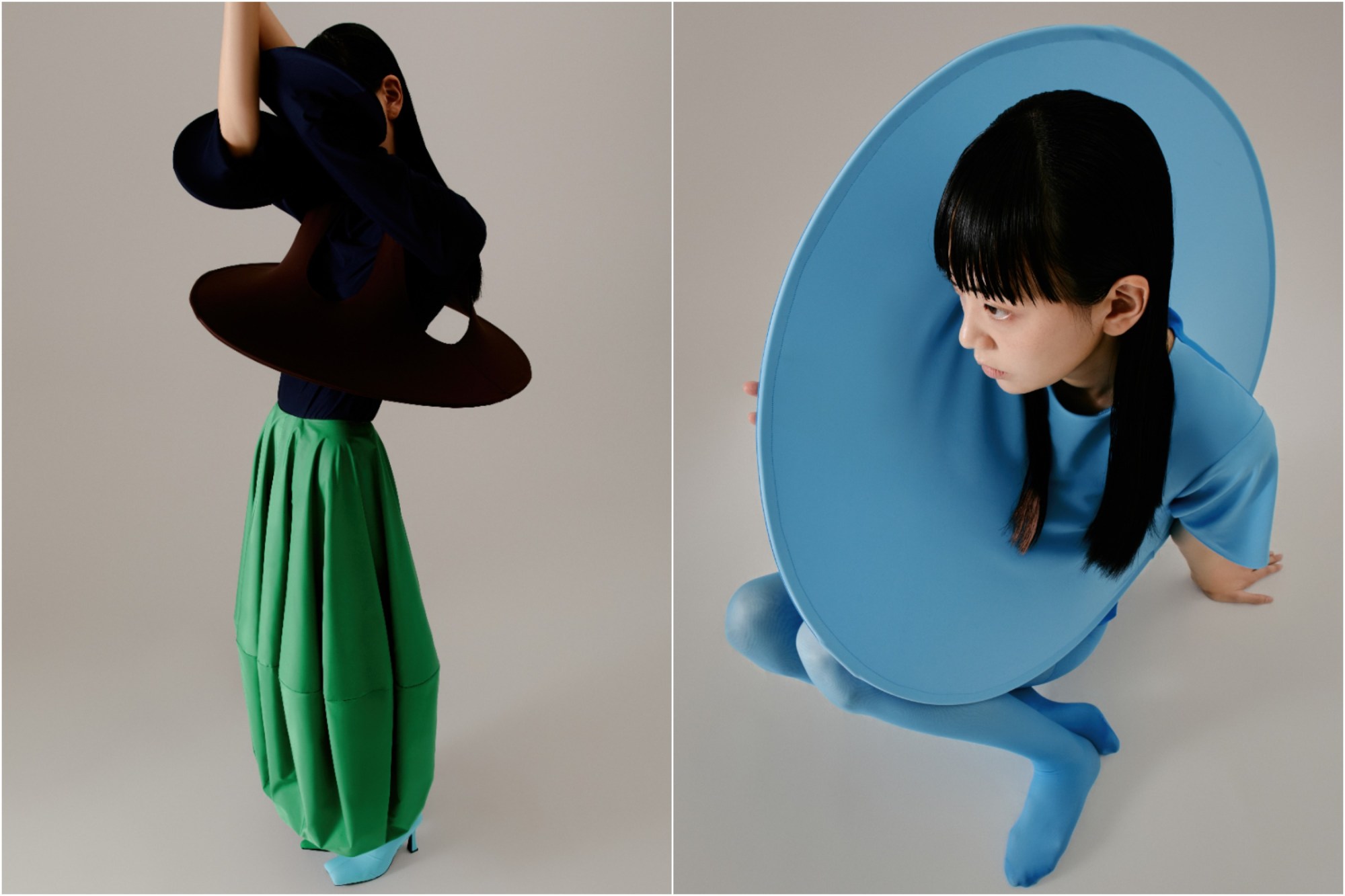
SUN WOO
Through her tent-inspired silhouettes, Central Saint Martins grad and Seoul-based designer Sun Woo Chang explores notions of belonging and un-belonging.
How did you start designing clothes?
I remember going to a fabric shop when I was in elementary school, making clothing by hand, and giving it to my friend for their birthday. Fashion, to me, was the most interesting field. It has movement, flexibility, when worn on different body shapes. Also, I found I could communicate with people by having them wear my pieces. It can be wearable or totally unrealistic. These elements of fashion attracted my interest, so I decided to pursue an education in fashion and continue designing clothes.
What’s the concept behind your pop-up tent pieces?
The idea started with my continuously moving life. I’ve lived in Korea, Canada and the UK. I’ve always thought I never belonged anywhere. One time, when I was in London, I saw a bunch of people moving around, carrying pop-up tents with them. I felt something in common with them; I thought, “that’s the life I’ve dreamed of”. These portable garments, imbued with the properties of pop-up tents are inspired by my own lack of a sense of belonging. The functionality, portability and protective nature of pop-up tents are translated into my garments through technical fabrics and wire hardware.
How does the body inform your work?
I find it interesting that the garments’ silhouette changes fluidly depending on different body types and shapes. That’s why I mainly use jersey, which is not only flexible but comfortable to wear.
How does wearability factor into your design process?
I first work on creating a shape and structure, conceptually, and then integrate wearability into the concept. For me, wearable means a garment literally has arm holes and an opening at the neckline.
Could your pieces exist as autonomous works, without being related to the body?
I believe so. Apart from the perspective of wearability, it’s important for me to apply structural beauty to a garment when creating it. I don’t think fashion necessarily has to remain as a wearable art form.
You can buy SUN WOO’s pieces online at DRESSX, APOC and CAVA.

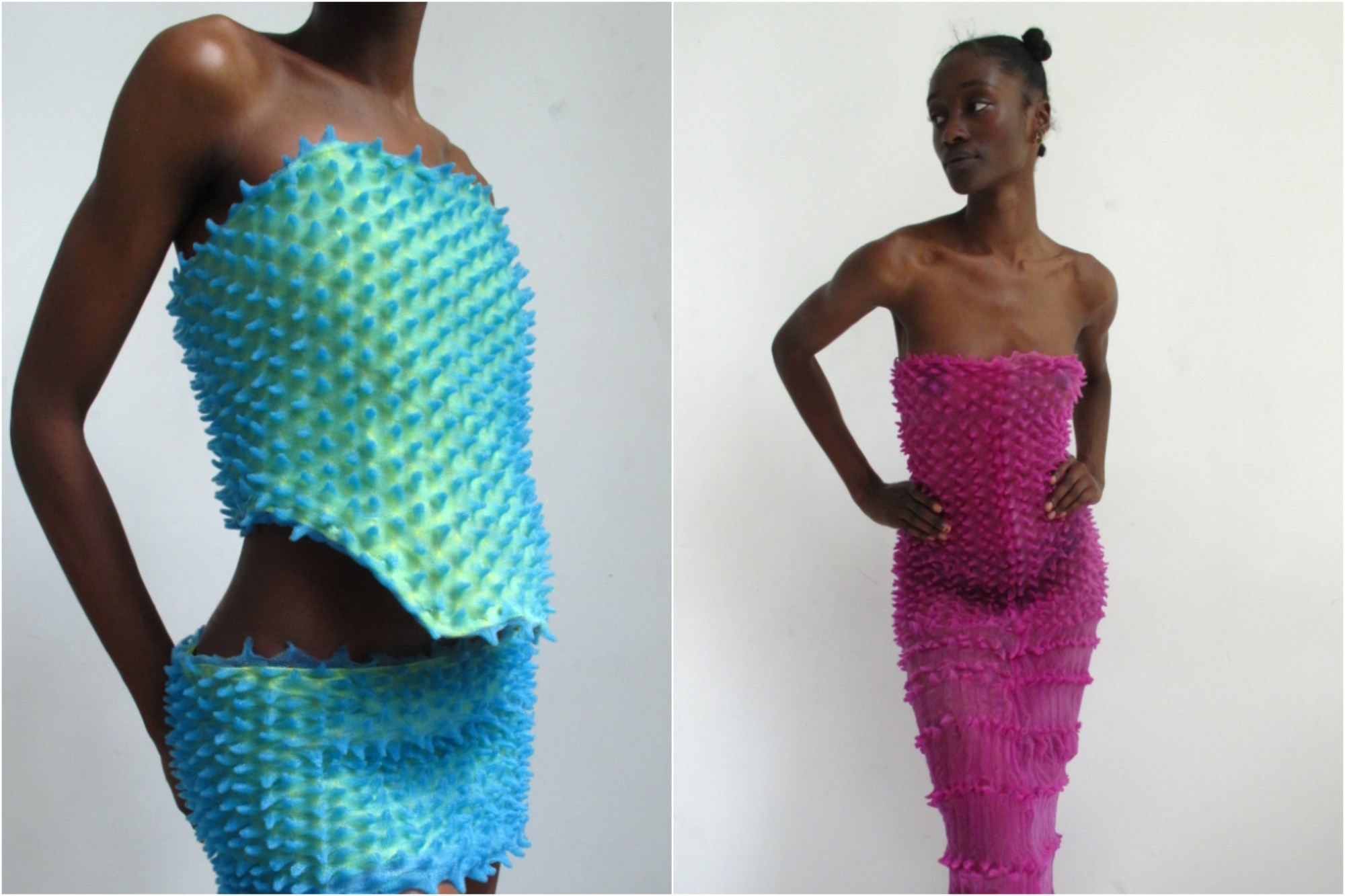
Chet Lo
Hailing from New York City, designer Chet Lo developed his signature spiky Durian knitwear by happy accident during his final year at CSM.
How did you start designing clothing?
I started with a very long journey of the arts: from trying out violin, guitar and dancing, to fine art, sculpture and finally wearable art which then led me to fashion. It was all a happy accident.
What’s the concept behind your popular Durian-textured pieces?
These pieces were also a happy accident! I was designing my final knitwear collection at Central Saint Martins, but I didn’t have any knit textiles in my collection, just embroidery. My tutor told me that in order to pass I had to have knit in the collection. So I begrudgingly started looking for techniques I’d heard of from the past but hadn’t tried yet, and used my favourite (and most difficult yarn) to finally develop the textile. I totally accidentally came upon it and marvelled at the possibilities!
How does the body inform your work?
The human body is so incredibly important to my work. When I was still in university, I had an incredibly different opinion — totally ignoring the body and just creating silhouettes that I believed were interesting. But I learned from my mentor that fashion works beautifully when coinciding with the natural proportions of the body. The slightest adjustment can truly change the entire silhouette and feel of a look!
How does wearability factor into your design process?
Wearability is really interesting to me. I think it’s something that was always ingrained in me as I grew up. But, of course, through experimenting in university and being in such an immersive, creative environment, you try new things. I definitely tried to create extremely experimental garments, especially for my final collection. But after I finished, I just thought to myself, “I really want to make myself a jumper now”. And that jumper turned into another and another, and then a dress. And then, suddenly, it became a second addition after my graduating collection, one that I was even happier with. I try to design now with a sense of, “Would I wear this?” “Am I personally excited to try this one?” Even though my personal taste is a little “out there”, I think it’s still important to have somebody think, “I’d love to wear that to a party one day”.
Could your pieces exist as autonomous works, without being related to the body?
Definitely. They have an element of sculpture that I find extremely interesting and I’ve been thinking of expanding to that world…
You can buy Chet Lo’s garments online at 50m.
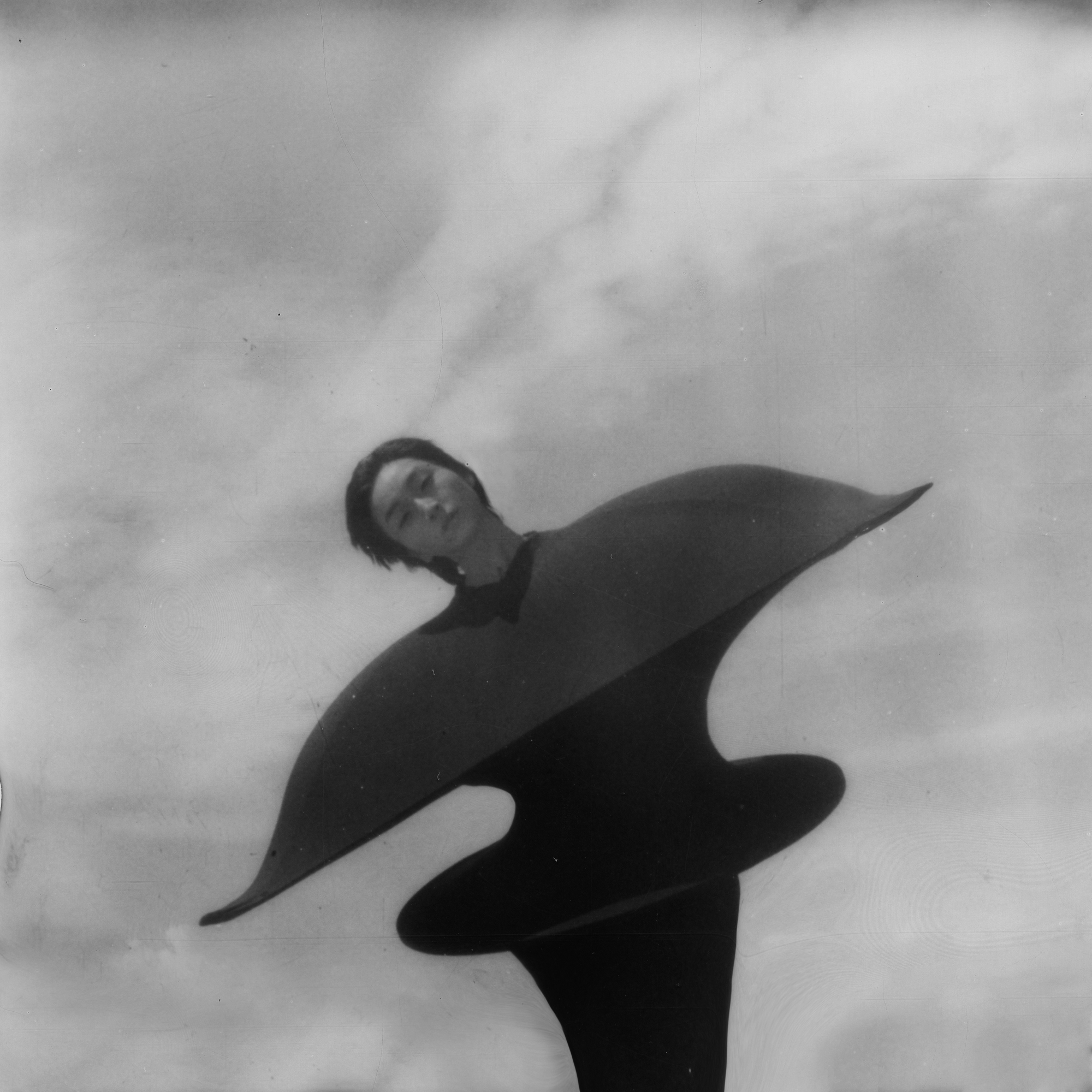
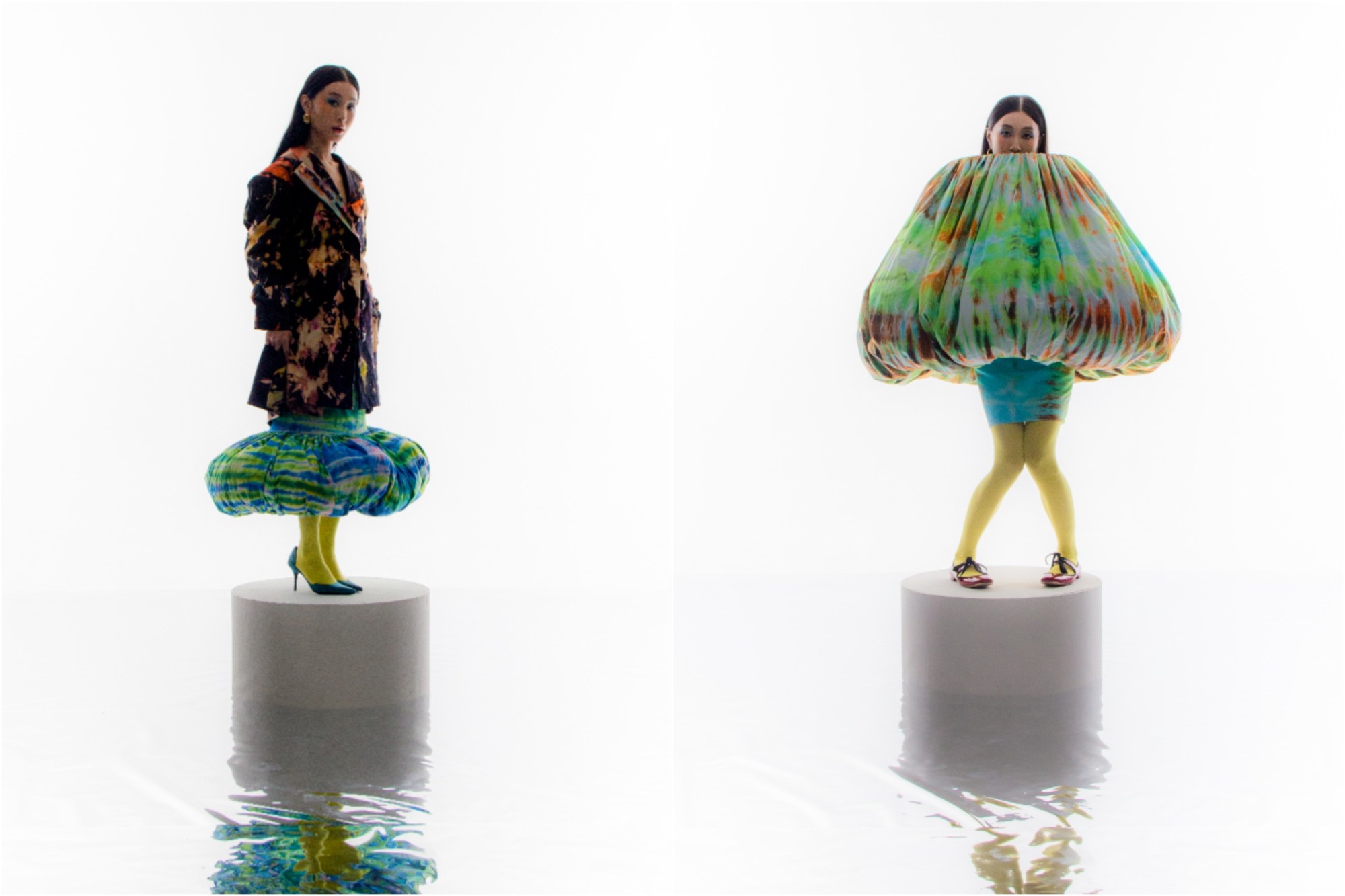
Terrence Zhou
Born in China and based in New York City, artist and designer Terrence Zhou explores interiority and emotionality through intricately-crafted, sculptural designs.
How did you start designing clothing?
Growing up, studying art wasn’t encouraged by my family. I’m good at math, so I ended up majoring in math in college, however, I know what I love and my romance is with art. So, I decided to transfer to Parsons in my sophomore year to study art and fashion. I’m thankful because I find the combination between art and math so unique and romantic. It not only shapes who I am, but translates into many design decisions.
When I walked into Parsons five years ago, I thought I would make some cool clothes. But very soon I realised that what I wanted to do was more than just design clothes. I’m more interested in connecting with my audience through my body of work. In most cases, I would rather spend time in the library doing research and building an interesting concept instead of sewing a garment.
What’s the concept behind your “lamp look” pieces?
This collection, my first, is inspired by myself, and is called “Living is a performance”. There’s this performative element where I project the best parts of myself while burying and blurring my fragility. This translated into a silhouette that has broad shoulders and a tiny waist, or a silhouette that has many layers, offering an expression of unapologetic beauty with an impenetrable barrier of confusion or farce.
What about the bulbous shapes from your second collection, ONG-2?
They’re built upon the designs from my first collection, but focus on my contrarian disposition and contradictory personality. For example, part of me is care-free. On the other hand, I’m extremely hard on myself. In order to connect these dots, I reimagined the fabrics as my skin and muscle tissues, which are tied into a precisely-calculated bundle, while allowing the dyes to bleed freely into each other. My work displays an authentic self to my audience. Revealing these traits through my design can sometimes be vulnerable or even triggering. I’m constantly battling these uncomfortable emotions during the design process. I guess that’s what makes this collection so special to me.
How does the body inform your work?
In my design process, the body acts as a catalyst to better exhibit my feelings and perspective to my audience. I want the wearers to feel the weight of my work, which carries my own emotional baggage. I’ve had feedback from models and friends complaining that my designs are too dominant and heavy to wear, to an extent that they feel even suffocating. Those uncomfortable feelings are often internalised within myself and hidden from the public, but I want to express or channel them through the human form.
You’ve spoken about your desire to break the rules of garment-making. How and why do you do this through your work?
Although I’ve never intended to dismiss the importance of the guidelines of making a garment, I aim to create my own design language to best suit each project. The rules of garment-making sound too “cookie-cutter” or rigid for me. Flexibility and creativity should go hand-in-hand. I don’t enjoy doing things by the book, as the sense of self is restricted and lost. As artists and designers, we need to have a room of our own if we are to create. Our vision should come from an honest and authentic place by following our own language and intuition.
You can purchase Terrence Zhou’s garments by personal order through his Instagram or website.



